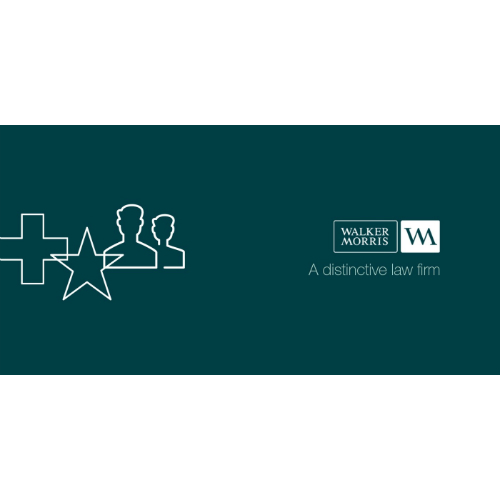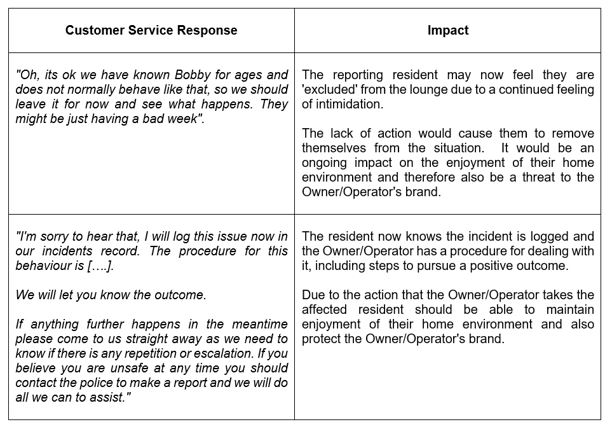
What’s your Problem? By Walker Morris
Mental and physical wellbeing is influenced by how we are treated by the people around us and the environment we are exposed to.
Fundamentally, we are [usually] all on the same page where distress is concerned. We do not enjoy life fraught with people (or occurrences) causing us distress. What distresses you however, will differ to what distresses the person sat next to you. No one person can tell you how you ‘should’ feel – it is personal to you.
Where home, work and social space meets, there are going to be differing behaviours, some positive and some not. Simultaneously keeping hundreds of people under the same roof both happy and safe is no small task. This article provides insight into how property managers can address these challenges.
…..Welcome to Community Impact!
When an issue has a detrimental impact on any residents in the community it should of course be investigated and handled appropriately. There are various stages to consider:
Let’s take a look at Stage 1 in more detail.
Identify the category of impact
Negative behaviours by a person which affect others are “anti-social”. Anti-social behaviours can be grouped into three categories: nuisance, personal and environmental.
More often than not, issues that arise involve multiple behaviours in more than one category. It is important to identify each of them, as this will affect the level of risk to be assigned when looking to establish the appropriate response.
Assess and decide on the level of risk
Defining the level of risk in the context of community impact will be based on:
- – whether the issue is, or is likely to be on-going, or if it is historic;
- – the individual circumstances of the person causing the issue; and
- – who is affected by it and how it affects them.
Having a set of procedures to enable staff to confidently identify the level of risk is key to ensure the safety of residents, staff and visitors and also the degree of threat to the brand reputation of the building’s owner/operator.
Establish the appropriate response and take action
The nature of the response will be driven by the risk assessment. This could be as simple as a phone call to the resident or it may require more substantial action, such as a 999 call and/or civil legal action.
Responses should be consistent.
We know that if we drive at 35 miles per hour in a 30 zone, and a speed camera catches this, we are likely to be offered a drivers awareness course or a fine and 3 points on our licence. We understand the rule and also the outcome, if we are caught breaking it.
If community impact procedures are in place and are consistently followed, residents will have confidence in the operational team’s ability to deal with any issues which arise, in a fair unbiased way.
Where anti-social behaviour is concerned, a resident who has lived in the building for 3 years should not be treated any differently to one who has only lived there only 3 months.
Let’s look at an example of Community Impact in this context:
Resident: “I need some help?”
Customer Service: “What’s your problem?”
Resident: “Over the past few days whilst in the communal lounge, Bobby from apartment 201 has made lots of aggressive and inappropriate comments to me. I need someone to do something about this. I want it to stop”.
A set of procedures or protocols may seem ‘technical’ and ‘formal’ which may not be the way you would like your scheme to operate. However, they are an essential risk management tool. The key is to make sure they reflect your vision and values when creating them.
About the Author:
This article was written by Deborah Brown, PRS Housing Consultant at Walker Morris LLP.
At the UKAA Expo on the 13th February 2020 in London, Deborah will be talking about a simple risk assessment procedure you can adopt to help with Stage 1 and also the importance of Stages 2 and 3. Make sure you attend the ‘Safer and stronger communities – the role you play’ seminar to hear her insight and to join in with the Q & A session afterwards.
UKAA Comment:
We are committed to understanding more about Community Impact. We have a question for Members which we would like you to take a moment to answer. Please click the vote now button below to join in with our twitter poll:
Read the Article: https://t.co/uTmmnPFzQX
Follow up question: What category of behaviour has already had the most significant community related impact on one or more of your schemes?
— UK Apartment Assoc (@TheUKAA) January 27, 2020
https://twitter.com/TheUKAA/status/1220758033334243334?s=20



